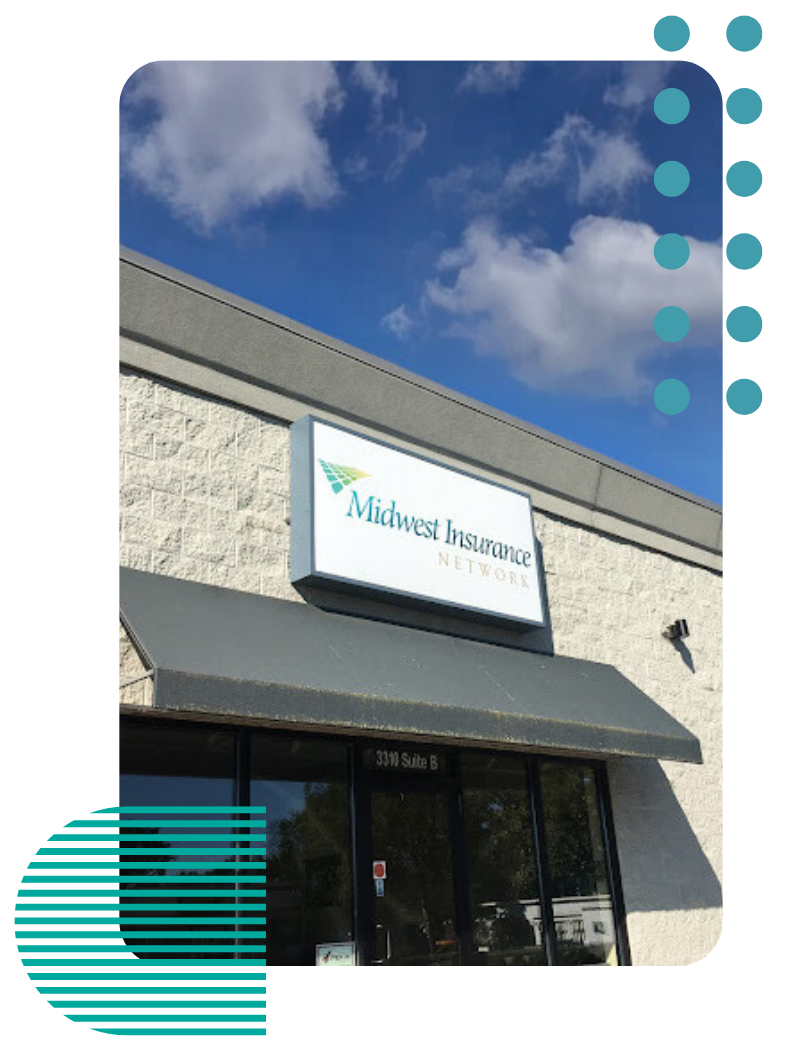Get in touch
419-720-5825
agency@midwest-insure.com
Top 3 Recommended Policies
Index
Contact Us
Phone
agency@midwest-insure.com
Location
Northwood, OH
3310 Woodville Road, Suite D
Northwood, OH 43619
Elmore, OH
361 Rice Street
Elmore, OH 43416
Operating a painting contractor business in Ohio comes with its own set of challenges and responsibilities. One of the most critical aspects of running such a business is ensuring that it is adequately protected. This is where painting contractors insurance comes into play. Understanding the various types of insurance available, the
legal requirements, and the benefits can help contractors safeguard their business and assets effectively.
Understanding Painting Contractors Insurance
Painting contractors insurance is designed to protect businesses from various risks associated with the painting industry. This type of insurance can cover everything from property damage to liability claims, ensuring that contractors can focus on their work without the constant worry of unforeseen financial burdens. The painting industry, while rewarding, can be fraught with hazards, making adequate insurance coverage essential for both peace of mind and operational continuity.
Types of Insurance Coverage
There are several types of insurance coverage that painting contractors in Ohio should consider. Each type serves a specific purpose and can help mitigate different risks. Understanding these options can empower contractors to make informed decisions about their insurance needs, ultimately leading to a more secure business environment.
- General Liability Insurance: This is perhaps the most essential type of insurance for painting contractors. It protects against claims of bodily injury or property damage that may occur during the course of a job. For example, if a client trips over equipment left on their property, general liability insurance can cover the medical expenses. Additionally, it can protect against claims resulting from accidents that occur off-site, such as paint spills that damage a client's property.
- Workers' Compensation Insurance: If a contractor has employees, this insurance is typically required by law in Ohio. It provides coverage for medical expenses and lost wages if an employee is injured on the job. This not only protects the employees but also shields the contractor from potential lawsuits. Moreover, having this coverage can enhance employee morale, as workers feel more secure knowing they are protected in case of an accident.
- Commercial Auto Insurance: If vehicles are used for business purposes, commercial auto insurance is necessary. This coverage protects against damages and liabilities resulting from accidents involving company vehicles. It can also cover the costs of repairs or replacements for vehicles that are damaged while transporting materials or equipment to job sites.
Additional Coverage Options
In addition to the primary types of coverage, there are other options that painting contractors might consider to further protect their business. These additional policies can help create a comprehensive safety net, ensuring that contractors are prepared for a variety of challenges that may arise in their line of work.
- Professional Liability Insurance: Also known as errors and omissions insurance, this coverage protects contractors against claims of negligence or failure to deliver services as promised. It is particularly useful for contractors who provide consulting services or design work. In an industry where client expectations can be high, having this insurance can safeguard against disputes that may arise from perceived shortcomings in service delivery.
- Equipment Insurance: This type of insurance covers the loss or damage of tools and equipment used in the business. Given that painting contractors rely heavily on their tools, this coverage can be invaluable. It can also cover rental costs for replacement equipment, allowing contractors to maintain their workflow without significant interruptions in the event of a loss.
- Umbrella Insurance:
This is an additional layer of liability coverage that goes beyond the limits of other policies. It can provide extra protection in case of large claims that exceed the primary policy limits. For painting contractors, this can be particularly important in high-stakes situations where a significant claim could jeopardize the financial stability of the business.

Legal Requirements for Insurance in Ohio
In Ohio, certain types of insurance are legally required for painting contractors, especially those with employees. Understanding these requirements is crucial to ensure compliance and avoid potential penalties. The legal landscape surrounding insurance can be complex, and staying informed about the latest regulations is essential for any contractor looking to operate successfully in the state.
Workers' Compensation Requirements
Ohio law mandates that any business with employees must carry workers' compensation insurance. This insurance is administered by the Ohio Bureau of Workers' Compensation (BWC) and provides benefits to employees who are injured on the job. Failing to carry this insurance can result in significant fines and legal repercussions. Additionally, it protects employers from lawsuits related to workplace injuries, creating a safer work environment and fostering employee loyalty. In Ohio, the BWC also offers various programs that can help businesses manage their workers' compensation costs, including safety training and incentive programs for maintaining a safe workplace.
General Liability Insurance Recommendations
While general liability insurance is not legally required in Ohio, it is highly recommended for painting contractors. Many clients will request proof of insurance before hiring a contractor, and having this coverage can enhance credibility and trustworthiness. General liability insurance protects against claims of bodily injury, property damage, and personal injury that may occur during the course of a project. This type of coverage not only safeguards the contractor's financial interests but also reassures clients that they are working with a responsible and professional business. Furthermore, some contracts may stipulate that contractors must carry a certain level of insurance, making it a practical necessity for those looking to secure larger projects or work with reputable companies in the industry.
Benefits of Having Insurance
Investing in painting contractors insurance offers numerous benefits that can positively impact a business's operations and reputation.
Financial Protection
One of the most significant advantages of having insurance is financial protection. In the event of an accident or claim, insurance can cover the costs associated with legal fees, medical expenses, and property damage. This can prevent a single incident from devastating a contractor's finances. Additionally, having comprehensive insurance can also enhance a contractor's ability to secure contracts, as many clients prefer to work with insured professionals, viewing it as a sign of reliability and responsibility.
Peace of Mind
Knowing that the business is protected against various risks allows contractors to focus on their work rather than worrying about potential liabilities. This peace of mind can lead to better job performance and customer satisfaction. Furthermore, with the right insurance coverage, contractors can take on larger projects with confidence, knowing that they are safeguarded against unforeseen circumstances that could otherwise jeopardize their livelihood.
Enhanced Professional Credibility
Having insurance not only protects a contractor but also enhances their professional credibility. Clients are more likely to trust and hire contractors who carry insurance, as it demonstrates a commitment to professionalism and accountability. This can lead to increased referrals and repeat business, as satisfied customers are more inclined to recommend insured contractors to their friends and family. Moreover, being insured can also provide an edge over competitors who may not have the same level of protection, allowing for a stronger market presence.
Access to Specialized Coverage
Another notable benefit of painting contractors insurance is access to
specialized coverage options tailored to the unique risks of the industry. For example, policies can include coverage for equipment breakdown, tools and materials theft, or even environmental damage caused by paint spills. This tailored approach ensures that contractors are not only protected against general liabilities but also against specific risks that could arise during their work. By having such specialized coverage, contractors can operate with greater assurance, knowing they are well-prepared for any challenges that may come their way.
Choosing the Right Insurance Provider
Selecting the right insurance provider is crucial for ensuring that a painting contractor's insurance needs are met effectively. Here are some factors to consider when choosing an insurance company.
Reputation and Experience
It is essential to research potential insurance providers to understand their reputation and experience in the industry. Look for companies that specialize in contractor insurance and have a proven track record of serving clients in the painting industry. Reading customer reviews and testimonials can provide valuable insights into how the company handles claims and customer interactions. Additionally, consider checking their financial stability through ratings from agencies like A.M. Best or Standard & Poor's, as this can indicate their ability to pay out claims when needed.
Coverage Options
Different insurance providers offer varying coverage options. It is important to compare policies to ensure that they meet the specific needs of the painting business. Look for customizable plans that allow contractors to add or remove coverage as necessary. Common coverage options include general liability, workers' compensation, and commercial auto insurance. Some providers may also offer specialized coverage for equipment and tools, which can be particularly beneficial for contractors who rely on expensive machinery and supplies to complete their projects. Understanding the nuances of each policy can help in making an informed decision that aligns with the contractor's operational risks.
Customer Service
Excellent customer service is vital when dealing with insurance matters. Choose a provider that is known for being responsive and helpful, especially during the claims process. A supportive insurance company can make a significant difference in stressful situations. Consider reaching out to potential providers with questions before making a decision; this interaction can give insight into their responsiveness and willingness to assist. Furthermore, inquire about their claims process and whether they offer a dedicated claims representative to guide you through the steps, as having a reliable point of contact can ease the burden during challenging times.
Pricing and Discounts
Pricing is another critical factor when selecting an insurance provider. While it may be tempting to choose the lowest premium, it’s essential to ensure that the coverage provided is adequate for the risks associated with painting projects. Many insurance companies offer discounts for various reasons, such as bundling multiple policies or having a good claims history. It’s worth inquiring about these options, as they can lead to significant savings over time. Additionally, consider the payment plans offered; some providers may allow for flexible payment options that can ease cash flow concerns for small businesses.
Claims Process
The efficiency of the claims process should also be a top consideration. A streamlined claims process can save contractors valuable time and reduce stress when they need to file a claim. Look for providers that offer online claims submission and tracking, as well as clear communication regarding the status of claims. Understanding the average turnaround time for claims can also provide insight into how well the provider manages its obligations. A provider that prioritizes timely claims processing can help ensure that contractors can quickly return to business as usual after an incident.

Cost of Insurance for Painting Contractors
The cost of insurance for painting contractors can vary widely based on several factors, including the size of the business, the number of employees, and the types of coverage selected. For many contractors, understanding these costs is essential not only for compliance but also for financial planning and risk management.
Factors Influencing Insurance Premiums
Several factors can influence the premiums that painting contractors pay for insurance. Understanding these can help contractors budget effectively and find ways to reduce costs. Additionally, the nature of the projects undertaken—whether residential or commercial—can also play a significant role in determining insurance rates, as commercial projects often carry higher liability risks.
- Business Size: Larger businesses with more employees typically face higher premiums due to the increased risk associated with a larger workforce. Conversely, smaller operations may benefit from lower rates, but they must also ensure they have adequate coverage to protect against potential liabilities.
- Claims History: A history of frequent claims can lead to higher premiums, as insurance companies may view the business as a higher risk. Contractors should strive to maintain a clean claims record, as this can significantly impact long-term insurance costs.
- Location: The location of the business can also impact insurance costs. Areas with higher crime rates or more frequent natural disasters may see increased premiums. Additionally, local regulations and building codes can affect the types of coverage required, further influencing overall costs.
Ways to Reduce Insurance Costs
While insurance is a necessary expense, there are several strategies that painting contractors can employ to help reduce their costs. By being proactive and informed, contractors can find ways to save without sacrificing essential coverage.
- Bundling Policies: Many insurance providers offer discounts for bundling multiple policies together, such as general liability and commercial auto insurance. This not only simplifies management but can also lead to significant savings.
- Improving Safety Practices: Implementing safety training and protocols can reduce the likelihood of accidents, which may lead to lower premiums over time. Regular safety audits and employee training sessions can foster a culture of safety, ultimately benefiting both the workforce and the bottom line.
- Regularly Reviewing Coverage: As a business grows and changes, so do its insurance needs. Regularly reviewing and adjusting coverage can ensure that contractors are not overpaying for unnecessary coverage. Engaging with an insurance broker who understands the specific needs of painting contractors can provide valuable insights into optimizing coverage.
Moreover, contractors should consider the importance of maintaining good relationships with their insurance agents. Open communication can lead to personalized advice and potentially better rates. Additionally, investing in technology, such as project management software, can help track job progress and safety compliance, which may also contribute to lower premiums over time. By taking a comprehensive approach to risk management, painting contractors can not only protect their business but also enhance their overall operational efficiency.
Claims Process for Painting Contractors Insurance
Understanding the claims process is essential for painting contractors, as it can help them navigate potential issues efficiently and effectively.
Steps to File a Claim
Filing a claim can seem daunting, but following a clear process can simplify the experience. Here are the general steps involved in filing a claim:
- Report the Incident: As soon as an incident occurs, it should be reported to the insurance provider. This can often be done online or over the phone.
- Document Everything: Gather all relevant information, including photographs, witness statements, and any other documentation that supports the claim.
- Submit the Claim: Complete the necessary claim forms and submit them along with the supporting documentation to the insurance company.
- Follow Up: Stay in contact with the insurance adjuster to track the progress of the claim and provide any additional information if requested.
Common Challenges in the Claims Process
While the claims process is designed to be straightforward, contractors may encounter challenges along the way. Common issues include delays in processing, disputes over coverage, and insufficient documentation.
To mitigate these challenges, it is crucial to maintain clear communication with the insurance provider and ensure that all documentation is thorough and accurate.
Conclusion
Ohio painting contractors insurance is a vital component of running a successful painting business. By understanding the various types of coverage available, the legal requirements, and the benefits of having insurance, contractors can make informed decisions that protect their business and assets. Choosing the right insurance provider, being aware of costs, and knowing how to navigate the claims process can further enhance the effectiveness of insurance coverage.
In a competitive industry, having the right insurance not only safeguards a business but also builds trust with clients. By prioritizing insurance needs, painting contractors can focus on delivering quality work and growing their business with confidence.
REQUEST A QUOTE
Get painting contractors insurance today!
Painting Contractors Insurance
We will get back to you as soon as possible.
Please try again later.
Midwest Insurance Network is an independent insurance agency offering a one-on-one service for all our insurance clients. We help you navigate the sea of policy options and clarify any questions or concerns you may have along the way.
Quick Links
Services
All Rights Reserved | Midwest Insurance Network.




